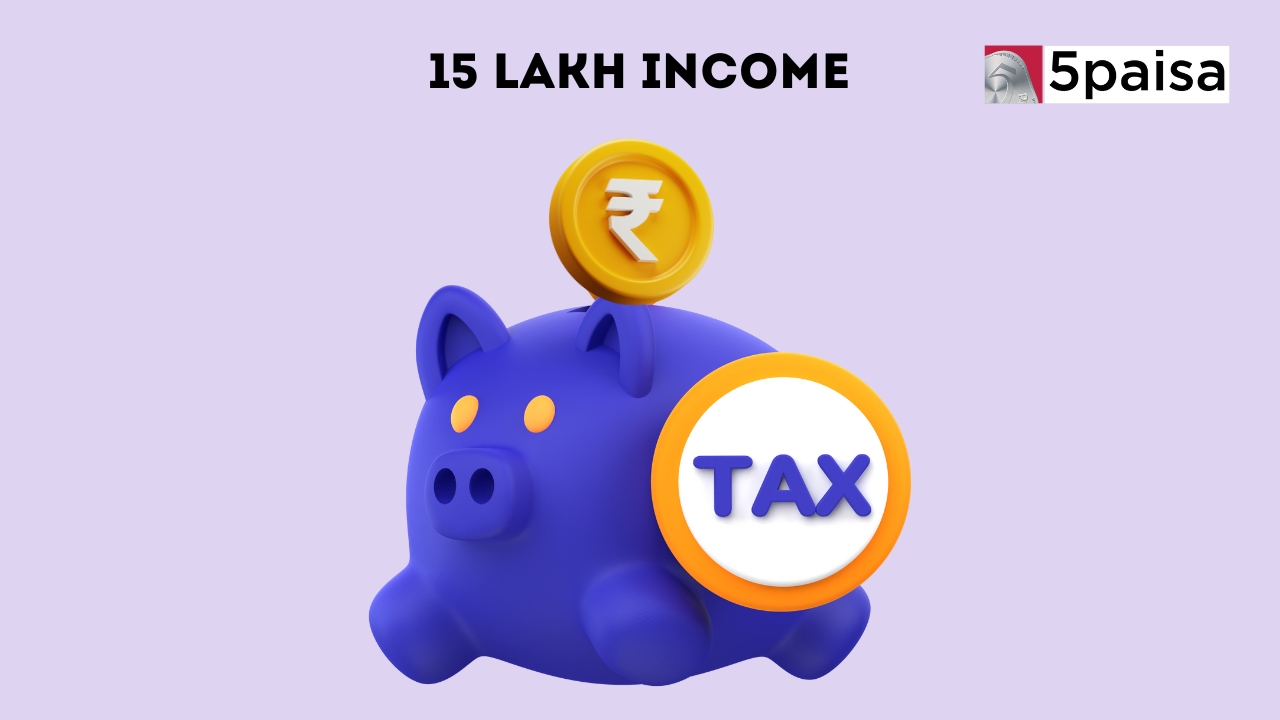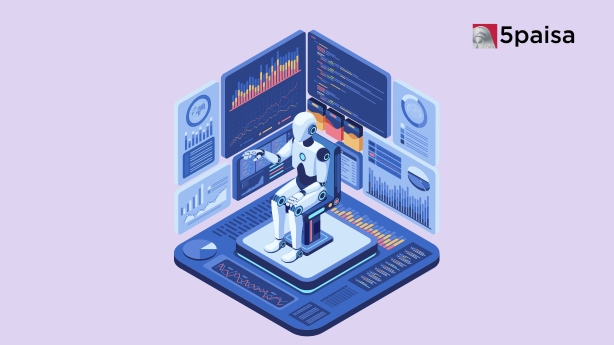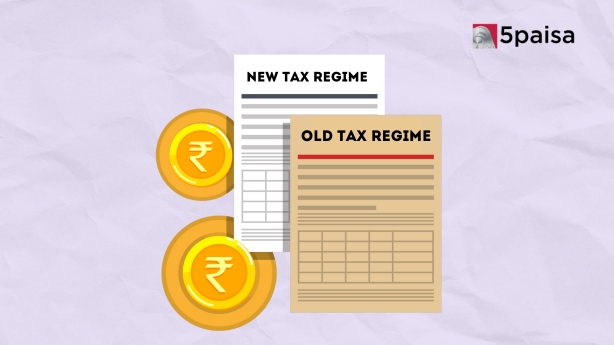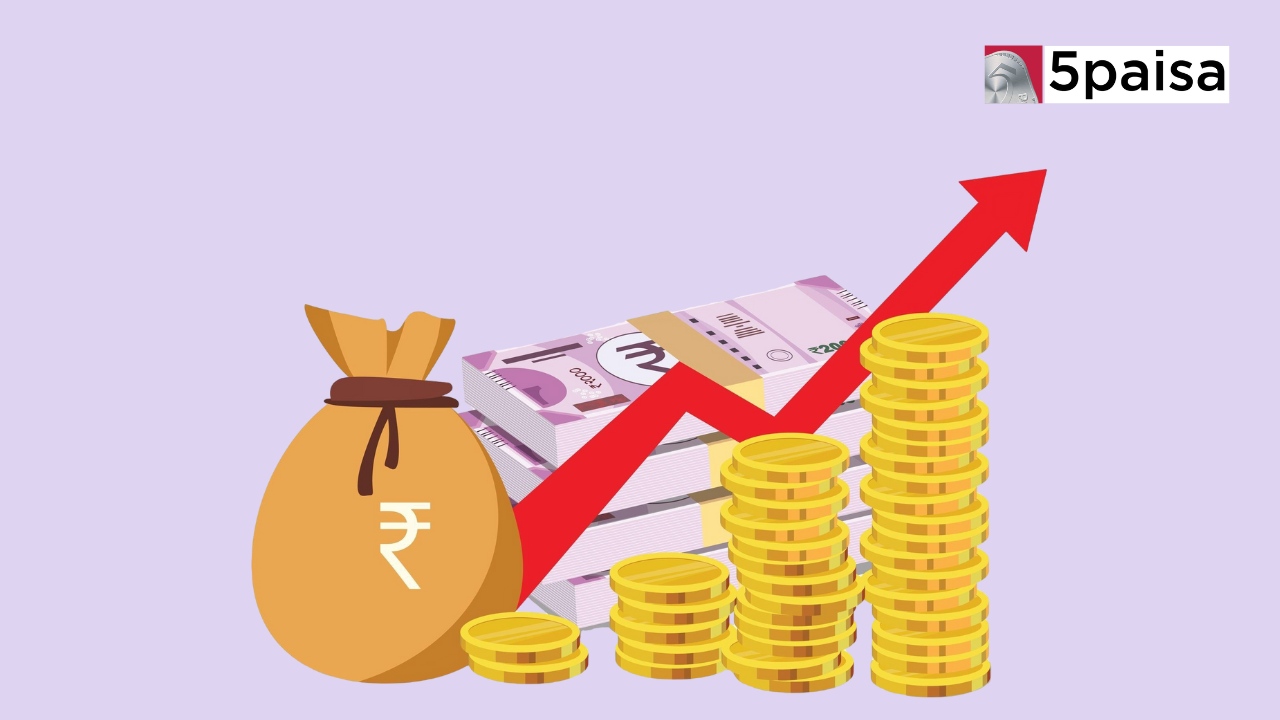3 Technologies Disrupting Finance in 2025: AI, Blockchain & Big Data Revolution
Effective Ways to Save Tax on a 15 Lakh Income

If you're earning over ₹15 lakh a year, you know the feeling. The more you earn, the more tax seems to cut into your income, taking a large portion away from your hard work. Without the right strategies, high tax rates can make it tough to save and build wealth. But there’s good news, smart planning can help you keep more of what you earn.
In this guide, we’ll show you effective ways to save tax on 15 lakh income. From understanding the latest tax slabs to maximizing deductions, these insights will help you save tax systematically.
Income Tax Slabs in the Old & New Regime
The tax regime in India offers two options: the old regime with deductions and exemptions and the new regime with reduced tax rates but limited deductions. Here's a quick look at the tax slab rates for both options, which apply to your taxable income after deductions:
| Tax Slab for FY 2023-24 | Tax Slab | Tax Slab for FY 2024-25 | Tax Slab |
| Up to ₹ 2.5 lakh | Nil | Up to ₹ 3 lakh | Nil |
| ₹ 2.5 lakh - ₹ 3 lakh | 5% | ₹ 3 lakh - ₹ 7 lakh | 5% |
| ₹ 3 lakh - ₹ 5 lakh | 5% | ₹ 7 lakh - ₹ 10 lakh | 10% |
| ₹ 5 lakh - ₹ 10 lakh | 20% | ₹ 10 lakh - ₹ 12 lakh | 15% |
| More than ₹ 10 lakh | 30% | ₹ 12 lakh - ₹ 15 lakh | 20% |
| More than ₹ 15 lakh | 30% |
Understand your Taxable Income
Before diving into tax-saving options, it’s essential to understand your tax liability. With an annual income of ₹15 lakh, you fall into the 30% tax bracket under the current tax regime.
Calculating your income tax involves key factors like the basic exemption limit, standard deduction, and tax rates for different income levels. Your salary structure may also include several tax-exempt components that can significantly lower your taxable income. Here’s how your net taxable income is calculated:
| Component | Description |
| Gross Salary | Salary prior to any deductions |
| Less: Exemptions | |
| Standard Deduction | Fixed deduction for all salaried individuals |
| HRA (House Rent Allowance) | Exempt up to a specific limit |
| Other Exemptions | LTA (Leave Travel Allowance), etc. |
| Net Salary | After deduction of exemptions |
| Less: Deductions | |
| Section 80C | Investments in ELSS, PPF, etc. |
| Section 80D | Health insurance policy premiums |
| Section 80CCD | NPS contribution |
| Other Deductions | Education loan, charity donation, etc. |
| Total Deductions | Sum of all deductions |
| Net Taxable Income | After all deductions |
Top 8 Ways You can Save Tax on 15 Lakh Income:
Let’s explore the main strategies you can use to reduce your taxable income and minimise taxes effectively on 15 lakh income:
Understanding Tax Slabs
It is essential to know the tax structure and deductions that are available to you before diving into ways to save tax. Individuals earning ₹15 lakh or more fall into the 30% tax bracket in both the old and new tax regime. Calculating taxable income requires deducting eligible exemptions from your total salary, forming the basis of effective tax planning.
Choose the Right Tax Regime
Deciding between the old and new regimes is essential for tax-saving. The old regime offers deductions under Sections like 80C, 80D, and 80CCD, making it suitable if you have numerous investments and expenses. However, the new regime may be more beneficial if you prefer simplicity and have fewer deductible expenses. It is crucial to choose the right tax regime to maximise your savings.
Leveraging Exemptions & Deductions
Many salary components are eligible for tax exemptions, making them essential in reducing taxable income. Key exemptions include House Rent Allowance (HRA), Leave Travel Allowance (LTA), and specific reimbursements.
With this, deductions also play a significant role in lowering tax liability. Under the old tax regime, deductions apply to various expenses like tuition fees, home loan interest, and contributions to provident funds, all of which reduce taxable income. We’ll dive into the exemptions and deductions that you can leverage in a while.
Investing in Provident Funds (PF) for Tax Benefits and Retirement Savings
For individuals earning above ₹15 lakh, provident funds can be a valuable investment to save tax. Contributions to the Employee Provident Fund (EPF) and Public Provident Fund (PPF) help build a retirement corpus while offering tax-free interest and tax benefits.
National Pension System (NPS)
The National Pension System is ideal for long-term tax planning, offering deductions under Section 80CCD(1B) in addition to the 80C limit. This scheme provides a structured approach to retirement savings and further reduces tax liability.
Tax Saving with Equity-Linked Savings Schemes (ELSS)
ELSS funds, which primarily invest in equities, are a popular tax-saving investment under Section 80C. With the dual advantage of potential high returns and a relatively short lock-in period of three years, ELSS provides greater flexibility compared to other options.
Understanding Tax on Long-Term Capital Gains
For individuals with investments in equities or real estate, understanding the tax on long-term capital gains is vital. Strategies like tax-loss harvesting and investing in tax-saving bonds can help manage and reduce the tax impact on these gains.
Save Tax with Health Insurance
Investing in a comprehensive health insurance policy provides both financial protection and tax benefits. The premiums paid for health insurance covering yourself, your family, and your parents qualify for deductions under Section 80D.
Exemptions and Deductions Available in Both the Tax Regimes
Deductions and exemptions are essential for saving tax, so it's important to understand what's available under each tax regime. Let’s see what you can leverage to save tax on ₹15 lakh income.
Deductions & Exemptions Under the New Tax Regime
The New Tax Regime offers fewer deductions and exemptions than the Old Tax Regime. However, there are still a few key deductions you can benefit from:
- Standard Deduction: ₹50,000 available to salaried individuals.
- Section 80CCD(2): Deduction for employer contributions toward the National Pension Scheme (NPS).
- Section 80CCH: Deduction for investments made in the Agniveer Corpus.
- Section 57(iia): Deduction available on family pensions received.
- Exemptions under Section 10:
- Voluntary retirement benefits under Section 10(10C).
- Gratuity payments under Section 10(10).
- Leave encashment benefits under Section 10(10AA).
- Interest deductions on home loans for rented properties under Section 24.
- Transport allowance for individuals with disabilities.
- Conveyance allowance for travel related to work.
- Compensation for travel costs incurred due to work-related transfers or tours.
Deductions & Exemptions Under the Old Tax Regime
Here are some of the key exemptions you can claim under the old regime:
- House Rent Allowance (HRA): Eligible for exemption up to a specified limit, based on factors such as the rent paid and salary.
- Leave Travel Allowance (LTA): Exempt for actual travel expenses on tickets for two trips within a four-year span, as per Section 10(5).
- Mobile/Internet Reimbursement: Exempt when used primarily for official purposes, provided valid bills or receipts are submitted.
- Children’s Education and Hostel Allowance: Up to ₹4,800 per child, with a maximum of two children.
- Food Allowance: Exempt up to ₹50 per meal, for a maximum of two meals a day, totaling ₹26,400 annually (₹50 x 2 meals x 22 working days x 12 months).
- Professional Tax: Typically ₹2,400, although it may vary depending on the state.
If you're looking to save tax on a salary above ₹15 lakhs, below are the tax deductions available under the Old Tax Regime:
| Health insurance premium payments (Section 80D) |
Self, spouse, and dependent children: ₹25,000 annually, or ₹50,000 if aged 60 or above.
|
| Education Loan (Section 80E) | Deduction of interest for up to 8 years starting from the year repayment begins. Eligible for loans taken for higher education of self, spouse, dependent children, or a ward for whom you are the legal guardian. |
| Charity Donation (Section 80G) | 50% to 100% of the eligible amount when made to specified institutions. |
| Investment in tax saving instruments (Section 80C) | You can claim up to ₹1,50,000 annually through investments in: Employees’ Provident Fund (EPF) Public Provident Fund (PPF) Equity Linked Savings Scheme (ELSS) Home loan principal repayment and stamp duty Sukanya Samriddhi Yojana (SSY) National Savings Certificate (NSC) 5-Year Fixed Deposits, and other approved options. |
| Home loan payment deductions | Principal Repayment: Up to ₹1.5 lakhs under Section 80C. Interest Payment: Up to ₹2 lakhs under Section 24(b). |
| Life Insurance Policy maturity amount | Life insurance maturity proceeds are tax-exempt if they meet these conditions: 20% of the sum assured for policies issued before April 1, 2012. 10% for policies issued after April 1, 2012. 15% for policies issued after April 1, 2013, for those with disabilities or certain diseases. |
| Standard Deduction | ₹50,000: Available to all taxpayers without any restrictions. |
How to Save Maximum Tax on 15 Lakh Salary?
Let’s take an example to understand how you can save tax on your 15 lakh salary in an easy way. Mr. Pratap earns a salary of ₹15 lakhs annually. He is eligible for an HRA exemption of ₹1 lakh, an LTA exemption of ₹20,000, and a children's education and hostel allowance of ₹9,600. A professional tax of ₹2,400 has been deducted from her payslip. Additionally, he has invested ₹1.5 lakh in PPF, made a voluntary contribution of ₹50,000 to the NPS, and paid a medical insurance premium of ₹25,000 for her family. Below is her tax calculation under both the old and new tax regimes.
| Particular | Old Tax Regime | New Tax Regime |
| Gross Salary | 15,00,000 | 15,00,000 |
| Less: | ||
| HRA Exemption | 1,00,000 | NA |
| LTA | 20,000 | NA |
| Children’s education and hostel allowance | 9,600 | NA |
| Standard Deduction | 50,000 | 50,000 |
| Professional Tax | 2,400 | NA |
| Taxable Salary Income | 13,18,000 | 14,50,000 |
| Less: Deductions | ||
| 80C | 1,50,000 | NA |
| 80CCD (1B) | 50,000 | NA |
| 80D - Medical Insurance | 25,000 | NA |
| Net Taxable Income | 10,93,000 | 14,50,000 |
| Tax Payable | 1,46,016 | 1,45,600 |
Under the new tax regime, Mr. Pratap’s tax liability amounts to Rs 1,45,600, making it more advantageous compared to the old regime. In this case, the payable tax, including cess, varies based on the deductions and exemptions allowed in each regime. While this is an individual scenario, it helps us understand why selecting the right regime is crucial in tax planning. Even without exemptions, the tax amount Mr. Pratap pays in the New Tax regime is lower. When selecting a tax regime, individuals should consider their investments and the eligible deductions to maximise tax benefits.
Conclusion
Effective tax planning is crucial, particularly for those in higher tax brackets. By understanding the tax benefits available under both regimes and strategically investing in tax-saving instruments, you can successfully save tax on 15 lakh income. Whether you choose the security of PPF, the growth potential of ELSS, or the long-term benefits of NPS, these strategies can make a tangible difference in your tax outflow. Start planning today to keep more of your income where it belongs, working for you.
- Flat ₹20 Brokerage
- Next-gen Trading
- Advanced Charting
- Actionable Ideas
Trending on 5paisa
03
 5paisa Research Team
5paisa Research Team
Personal Finance Related Articles
Disclaimer: Investment in securities market are subject to market risks, read all the related documents carefully before investing. For detailed disclaimer please Click here.





